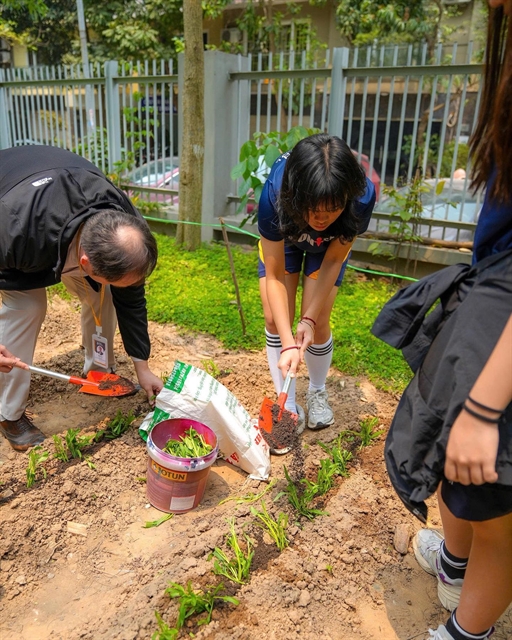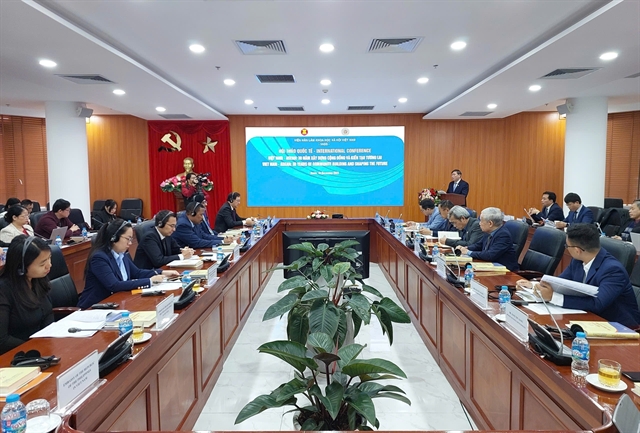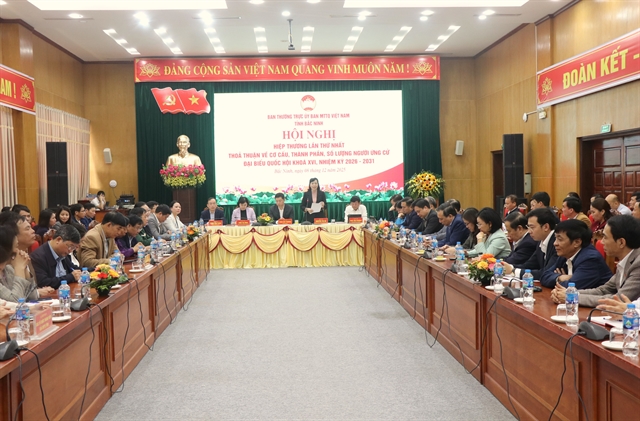 Environment
Environment

Province and city authorities have been told to stop investment in fired clay brick production and to prioritise investment in other environmentally friendly construction materials.
 |
| Conventional brickyards in Hàm Yên District in the northern province of Tuyên Quang. — VNA/VNS Photo Quang Đán |
HÀ NỘI — Province and city authorities have been told to stop investment in fired clay brick production and to prioritise investment in other environmentally friendly construction materials.
The order was one of the highlights of a recent official paper issued by the Deputy Prime Minister Trịnh Đình Dũng. The paper followed a month of study and the consideration of feedback at a national conference on the development of construction materials held in mid-December.
It is estimated that in 2020, Việt
Việt
Therefore, “developing sustainable material construction will bring beneficial contributions to socio-economic development,” the paper says.
The new order to contain the expansion of conventional fired bricks comes seven years after a programme (Decision No 567/QĐ-TTg) aiming at encouraging the production and use of unfired materials was launched in 2010 with a vision towards 2020.
The programme aimed to substitute at least 20-25 per cent of fired clay materials with unfired variants by 2015 and 30-40 per cent by 2020. The construction ministry’s data showed that in 2017, the country produced some seven billion standardised unfired bricks, or 28 per cent of the total bricks produced.
While the first-phase target was achieved, construction authorities said the latter target might be elusive for several reasons. The unfired bricks are relatively more expensive, the public retains a cautious attitude towards new products and enforcement is weak, the Vietnam News Agency reported.
Phạm Văn Bắc, head of construction materials department under the Ministry of Construction, said that the raw materials to produce unfired bricks are ash, slag, plaster, stones and other industrial and construction wastes, which are all easily accessible due to the country’s ongoing modernisation and industrialisation process.
Towards the end of 2017, 40 million tonnes of ash and flue-gas desulfurisation (FGD), a byproduct of the desulphurization process in coal burning plants, remain unhandled in the country. Another 15 million tonnes are expected to be added to this figure annually. But expanding unfired brick production could chip away at the waste.
“If this enormous amount of waste is not properly handled, it will be a burden on the environment as vast tracts of land would be needed to store [it]. However, this waste would be a boon to the production of unfired bricks. Two birds with one stone,” Nguyễn Minh Tuấn, deputy general director of Viglacera, a State-controlled construction materials company that has received praise from the government for its efforts in pioneering unfired materials, told Thời báo tài chính Việt Nam online newspaper.
Deputy PM Trịnh Đình Dũng has asked all relevant ministries and State agencies to thoroughly review the implementation of the 2010 programme and to make appropriate amendments to State management regulations to help the programme achieve its targets.
The Ministry of Construction has been told to work with the Ministry of Science and Technology in develop new building materials that are affordable, high quality and “green, consistent with climate change adaptation policies.”
Deputy PM Dũng also ordered environment agencies to boost inspection and monitoring of mineral extraction, especially sand mining near estuaries, an activity that has drawn public criticism over its environmental impacts.
The report also asks for the quick completion of several plans to be submitted to the Prime Minister. The plans include one on developing the cement production industry in Việt Nam, an accompanying master plan on surveying, processing and using mineral natural resources to produce cement, and a project to develop construction materials for use in coastal and island areas.
The Ministry of Finance shall review and amend policies on natural resource taxes, export taxes and environment protection fees to ensure the sustainable development of construction materials; to craft incentives to encourage businesses to reduce the use of mineral resources and instead use materials from waste and new green materials. — VNS




